An Integrated Approach to Using Sheep Wool as a Fibrous Material for Enhancing Strength and Transport Properties of Concrete Composites
Abstract
:1. Introduction
2. Experimental Program
2.1. Materials and Sample Preparation
2.2. Testing Methods
3. Results and Discussion
3.1. Workability
3.2. Compressive Strength
3.3. Flexural Strength
3.4. Ultrasonic Pulse Velocity
3.5. Sorptivity
3.6. Chloride Diffusion
4. Conclusions
- The addition of wool fibers and increased fiber dosages remarkably reduced the workability of concrete mixtures, at which the slump values dropped to about zero at a fiber content of 2.5%.
- When sheep wool fibers were added, the compressive strength was slightly reduced. Nevertheless, pre-treatment wool fibers resulted in higher strength values than normal wool fibers. The obtained compressive strength values ranged between 28 and 35 MPa for the mixes containing 0.5% to 2.5% MWF at the age of 90 days, which signifies the sufficient strength that can be utilized for various applications.
- Despite the reduction in compressive strength of concrete mixtures, considerable increases in flexural strength of all concrete mixes were recorded. All reinforced mixes obtained greater flexural strength values than plain concrete mixes. The maximum flexural strength of 5.3 MPa was obtained for the concrete mix containing 1.5% MWF at the age of 90 days, which is about 28% higher than that of 4.15 MPa recorded for the plain control mix.
- The addition of wool fibers did not significantly affect the UPV values. However, the obtained UPV values of higher than 3300 m/s classified the concrete as good quality concrete.
- Pre-treatment of sheep wool fibers with saltwater resulted in significantly improved fiber characteristics and better adherence to cement paste. In addition, a lesser percentage of modified sheep wool fibers improves mechanical qualities, whereas the same improvement in strength can be achieved with a higher rate of untreated wool.
- The addition of wool fibers up to a specific dosage reduced the water absorption rate of concrete mixtures and resulted in a lower rate of chloride penetration in reinforced specimens. This was owing to the fiber’s bridging action and providing a rigid network, which prevents the entrance of liquids into the concrete matrix. In addition, wool fibers can absorb up to 28% of their weight in water without feeling wet, which significantly interacts with the concrete matrix in reducing the water absorption rate.
- The overall performance of concrete mixtures may be improved by a particular treatment of sheep wool fibers. Consequently, concrete composites comprising modified waste sheep wool fibers are regarded as one of the most promising sustainable building materials for environmentally friendly construction with comparatively lower cost.
Author Contributions
Funding
Institutional Review Board Statement
Informed Consent Statement
Data Availability Statement
Acknowledgments
Conflicts of Interest
References
- Ghermezgoli, Z.M.; Moezzi, M.; Yekrang, J.; Rafat, S.A.; Soltani, P.; Barez, F. Sound absorption and thermal insulation characteristics of fabrics made of pure and crossbred sheep waste wool. J. Build. Eng. 2020, 35, 102060. [Google Scholar] [CrossRef]
- Dénes, O.; Florea, I.; Manea, D.L. Utilization of Sheep Wool as a Building Material. Procedia Manuf. 2019, 32, 236–241. [Google Scholar] [CrossRef]
- Mohammadhosseini, H.; Lim, N.H.A.S.; Tahir, M.M.; Alyousef, R.; Samadi, M.; Alabduljabbar, H.; Mohamed, A.M. Effects of waste ceramic as cement and fine aggregate on durability performance of sustainable mortar. Arab. J. Scien. Eng. 2020, 45, 3623–3634. [Google Scholar] [CrossRef]
- Jóźwiak-Niedźwiedzka, D.; Fantilli, A.P. Wool-Reinforced Cement Based Composites. Materials 2020, 13, 3590. [Google Scholar] [CrossRef] [PubMed]
- Tiuc, A.E.; Nemeş, O.; Vermeşan, H.; Vasile, O. Innovative use of sheep wool for obtaining materials with im-proved sound-absorbing properties. Materials 2020, 13, 694. [Google Scholar]
- Alrshoudi, F.; Mohammadhosseini, H.; Alyousef, R.; Alghamdi, H.; Alharbi, Y.R.; Alsaif, A. Sustainable use of waste polypropylene fibers and palm oil fuel ash in the production of novel prepacked aggregate fiber-reinforced concrete. Sustainability 2020, 12, 4871. [Google Scholar] [CrossRef]
- Corscadden, K.W.; Biggs, J.N.; Stiles, D.K. Sheep’s wool insulation: A sustainable alternative use for a renewable resource? Resour. Conserv. Recycl. 2014, 86, 9–15. [Google Scholar] [CrossRef]
- Mohammadhosseini, H.; Yatim, J.M.; Sam, A.R.M.; Awal, A.A. Durability performance of green concrete composites containing waste carpet fibers and palm oil fuel ash. J. Clean. Prod. 2017, 144, 448–458. [Google Scholar] [CrossRef]
- Volf, M.; Diviš, J.; Havlík, F. Thermal, Moisture and Biological Behaviour of Natural Insulating Materials. Energy Procedia 2015, 78, 1599–1604. [Google Scholar] [CrossRef] [Green Version]
- Korjenic, A.; Klarić, S.; Hadžić, A.; Korjenic, S. Sheep Wool as a Construction Material for Energy Efficiency Improvement. Energies 2015, 8, 5765–5781. [Google Scholar] [CrossRef] [Green Version]
- Zach, J.; Korjenic, A.; Petránek, V.; Hroudová, J.; Bednar, T. Performance evaluation and research of alternative thermal insulations based on sheep wool. Energy Build. 2012, 49, 246–253. [Google Scholar] [CrossRef]
- Dabbaghi, F.; Sadeghi-Nik, A.; Libre, N.A.; Nasrollahpour, S. December. Characterizing fiber reinforced con-crete incorporating zeolite and metakaolin as natural pozzolans. Structures 2021, 34, 2617–2627. [Google Scholar] [CrossRef]
- Awal, A.A.; Mohammadhosseini, H. Green concrete production incorporating waste carpet fiber and palm oil fuel ash. J. Clean. Prod. 2016, 137, 157–166. [Google Scholar] [CrossRef]
- Mousavi, M.A.; Sadeghi-Nik, A.; Bahari, A.; Jin, C.; Ahmed, R.; Ozbakkaloglu, T.; de Brito, J. Strength opti-mization of cementitious composites reinforced by carbon nanotubes and Titania nanoparticles. Constr. Build. Mater. 2021, 303, 124510. [Google Scholar] [CrossRef]
- Askarian, M.; Aval, S.F.; Joshaghani, A. A comprehensive experimental study on the performance of pumice powder in self-compacting concrete (SCC). J. Sustain. Cem. Mater. 2018, 7, 340–356. [Google Scholar] [CrossRef]
- Alyousef, R.; Alabduljabbar, H.; Mohammadhosseini, H.; Mohamed, A.M.; Siddika, A.; Alrshoudi, F.; Alaskar, A. Utilization of sheep wool as potential fibrous materials in the production of concrete composites. J. Build. Eng. 2020, 30, 101216. [Google Scholar] [CrossRef]
- Ramezani, M.; Kim, Y.H.; Sun, Z. Probabilistic model for flexural strength of carbon nanotube reinforced ce-ment-based materials. Compos. Struct. 2020, 253, 112748. [Google Scholar] [CrossRef]
- Mohammadhosseini, H.; Tahir, M. Production of sustainable fibre-reinforced concrete incorporating waste chopped metallic film fibres and palm oil fuel ash. Sādhanā 2018, 43, 1–12. [Google Scholar] [CrossRef] [Green Version]
- Mazari, M.; Aval, S.F.; Rodriguez-Nikl, T. Evaluating the Use of Recycled and Sustainable Materials in Self-Consolidating Concrete for Underground Infrastructure Applications; (No. UTC-UTI Report 009); U.S. Department of Transportation, Office of the Assistant Secretary for Research and Technology: Washington, DC, USA, 2020. [Google Scholar]
- Marchelli, F.; Rovero, G.; Curti, M.; Arato, E.; Bosio, B.; Moliner, C. An integrated approach to convert ligno-cellulosic and wool residues into balanced fertilisers. Energies 2021, 14, 497. [Google Scholar] [CrossRef]
- Khan, M.; Ali, M. Effectiveness of hair and wave polypropylene fibers for concrete roads. Constr. Build. Mater. 2018, 166, 581–591. [Google Scholar] [CrossRef]
- Fantilli, A.P.; Sicardi, S.; Dotti, F. The use of wool as fiber-reinforcement in cement-based mortar. Constr. Build. Mater. 2017, 139, 562–569. [Google Scholar] [CrossRef]
- Yap, Z.S.; Khalid, N.H.A.; Haron, Z.; Mohamed, A.; Tahir, M.M.; Hasyim, S.; Saggaff, A. Waste Mineral Wool and Its Opportunities—A Review. Materials 2021, 14, 5777. [Google Scholar] [CrossRef] [PubMed]
- Parlato, M.C.; Porto, S.M. Organized Framework of Main Possible Applications of Sheep Wool Fibers in Building Components. Sustainability 2020, 12, 761. [Google Scholar] [CrossRef] [Green Version]
- Mohammadhosseini, H.; Alrshoudi, F.; Tahir, M.M.; Alyousef, R.; Alghamdi, H.; Alharbi, Y.R.; Alsaif, A. Performance evaluation of novel prepacked aggregate concrete reinforced with waste polypropylene fibers at elevated temperatures. Constr. Build. Mater. 2020, 259, 120418. [Google Scholar] [CrossRef]
- Wei, J.; Meyer, C. Degradation mechanisms of natural fiber in the matrix of cement composites. Cem. Concr. Res. 2015, 73, 1–16. [Google Scholar] [CrossRef]
- Aymerich, F.; Fenu, L.; Meloni, P. Effect of reinforcing wool fibres on fracture and energy absorption properties of an earthen material. Constr. Build. Mater. 2012, 27, 66–72. [Google Scholar] [CrossRef]
- Onuaguluchi, O.; Banthia, N. Plant-based natural fibre reinforced cement composites: A review. Cem. Concr. Compos. 2016, 68, 96–108. [Google Scholar] [CrossRef]
- Cao, M.; Li, L. New models for predicting workability and toughness of hybrid fiber reinforced cement-based composites. Constr. Build. Mater. 2018, 176, 618–628. [Google Scholar] [CrossRef]
- Bahari, A.; Sadeghi-Nik, A.; Cerro-Prada, E.; Sadeghi-Nik, A.; Roodbari, M.; Zhuge, Y. One-step random-walk process of nanoparticles in cement-based materials. J. Central South Univ. 2021, 28, 1679–1691. [Google Scholar] [CrossRef]
- Fabio, S.; Massimo, B.; Stefano, C.; Carla, L.; Catarina, M.; José, M. Ancient restoration and production tech-nologies of Roman mortars from monuments placed in hydrogeological risk areas: A case study. Archaeol. Anthropol. Sci. 2020, 12, 1–23. [Google Scholar] [CrossRef]
- Columbu, S.; Gaviano, E.; Costamagna, L.G.; Fancello, D. Mineralogical-Petrographic and Physical-Mechanical Features of the Construction Stones in Punic and Roman Temples of Antas (SW Sardinia, Italy): Provenance of the Raw Materials and Conservation State. Minerals 2021, 11, 964. [Google Scholar] [CrossRef]
- Grădinaru, C.M.; Bărbuță, M.; Șerbănoiu, A.A.; Babor, D. Investigations on the mechanical properties of con-crete with sheep wool fibers and fly ash. Bull. Transilv. Univ. Braşov 2016, 9, 58. [Google Scholar]
- Valenza, A.; Fiore, V.; Nicolosi, A.; Rizzo, G.; Scaccianoce, G.; Di Bella, G. Effect of sheep wool fibres on ther-mal-insulation and mechanical properties of cement matrix. Acad. J. Civ. Eng. 2015, 33, 40–45. [Google Scholar]
- Columbu, S.; Palomba, M.; Sitzia, F.; Murgia, M.R. Geochemical, mineral-petrographic and physical-mechanical characterization of stones and mortars from the Romanesque Saccargia Basilica (Sardinia, Italy) to define their origin and alteration. Ital. J. Geosci. 2018, 137, 369–395. [Google Scholar] [CrossRef]
- Columbu, S.; Sitzia, F.; Ennas, G. The ancient pozzolanic mortars and concretes of Heliocaminus baths in Ha-drian’s Villa (Tivoli, Italy). Archaeol. Anthropol. Sci. 2017, 9, 523–553. [Google Scholar]
- Pederneiras, C.M.; Veiga, R.; De Brito, J. Rendering Mortars Reinforced with Natural Sheep’s Wool Fibers. Materials 2019, 12, 3648. [Google Scholar] [CrossRef] [PubMed] [Green Version]
- Neville, A.M.; Brooks, J.J. Concrete Technology, 2nd ed.; Longman Scientific & Technical: London, UK, 2010. [Google Scholar]
- Mastali, M.; Dalvand, A.; Sattarifard, A. The impact resistance and mechanical properties of the reinforced self-compacting concrete incorporating recycled CFRP fiber with different lengths and dosages. Compos. Part B Eng. 2017, 112, 74–92. [Google Scholar]
- Ortega-López, V.; García-Llona, A.; Revilla-Cuesta, V.; Santamaría, A.; San-José, J.T. Fiber-reinforcement and its effects on the mechanical properties of high-workability concretes manufactured with slag as aggregate and binder. J. Build. Eng. 2021, 43, 102548. [Google Scholar]
- Amer, A.A.R.; Abdullah, M.M.A.B.; Liew, Y.M.; Aziz, I.H.A.; Wysłocki, J.J.; Tahir, M.F.M.; Sochacki, W.; Garus, S.; Gondro, J.; Amer, H.A. Optimizing of the Cementitious Composite Matrix by Addition of Steel Wool Fibers (Chopped) Based on Physical and Mechanical Analysis. Materials 2021, 14, 1094. [Google Scholar] [CrossRef]
- Shawnim, P.; Mohammad, F. Porosity, permeability and microstructure of foamed concrete through SEM im-ages. J. Civ. Eng. Sci. Technol. 2019, 10, 22–33. [Google Scholar] [CrossRef]
- García, A.; Norambuena-Contreras, J.; Partl, M.N. A parametric study on the influence of steel wool fibers in dense asphalt concrete. Mater. Struct. 2013, 47, 1559–1571. [Google Scholar] [CrossRef]
- De Schutter, G.; Audenaert, K. Evaluation of water absorption of concrete as a measure for resistance against carbonation and chloride migration. Mater. Struct. 2004, 37, 591–596. [Google Scholar] [CrossRef]
- Mohammadhosseini, H.; Alrshoudi, F.; Tahir, M.M.; Alyousef, R.; Alghamdi, H.; Alharbi, Y.R.; Alsaif, A. Durability and thermal properties of prepacked aggregate concrete reinforced with waste polypropylene fibers. J. Build. Eng. 2020, 32, 101723. [Google Scholar] [CrossRef]
- Alyousef, R.; Mohammadhosseini, H.; Alrshoudi, F.; Alabduljabbar, H.; Mohamed, A.M. Enhanced performance of concrete composites comprising waste metalised polypropylene fibres exposed to aggressive environments. Crystals 2020, 10, 696. [Google Scholar] [CrossRef]
- Mohammadhosseini, H.; Ngian, S.P.; Alyousef, R.; Tahir, M.M. Synergistic effects of waste plastic food tray as low-cost fibrous materials and palm oil fuel ash on transport properties and drying shrinkage of concrete. J. Build. Eng. 2021, 42, 102826. [Google Scholar] [CrossRef]
- Benjeddou, O.; Alyousef, R.; Mohammadhosseini, H.; Soussi, C.; Khadimallah, M.A.; Alabduljabbar, H.; Tahir, M.M. Utilisation of waste marble powder as low-cost cementing materials in the production of mortar. J. Build. Eng. 2020, 32, 101642. [Google Scholar] [CrossRef]
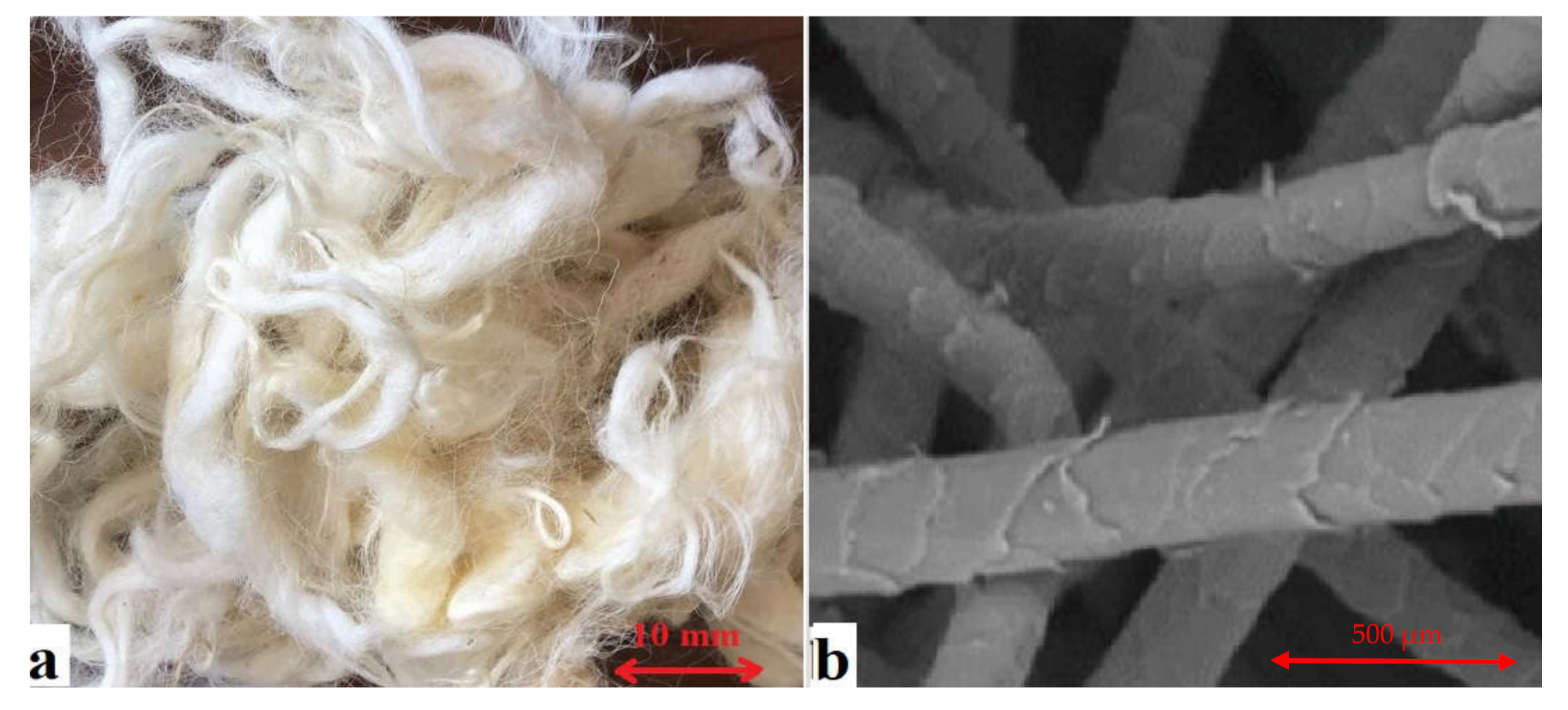
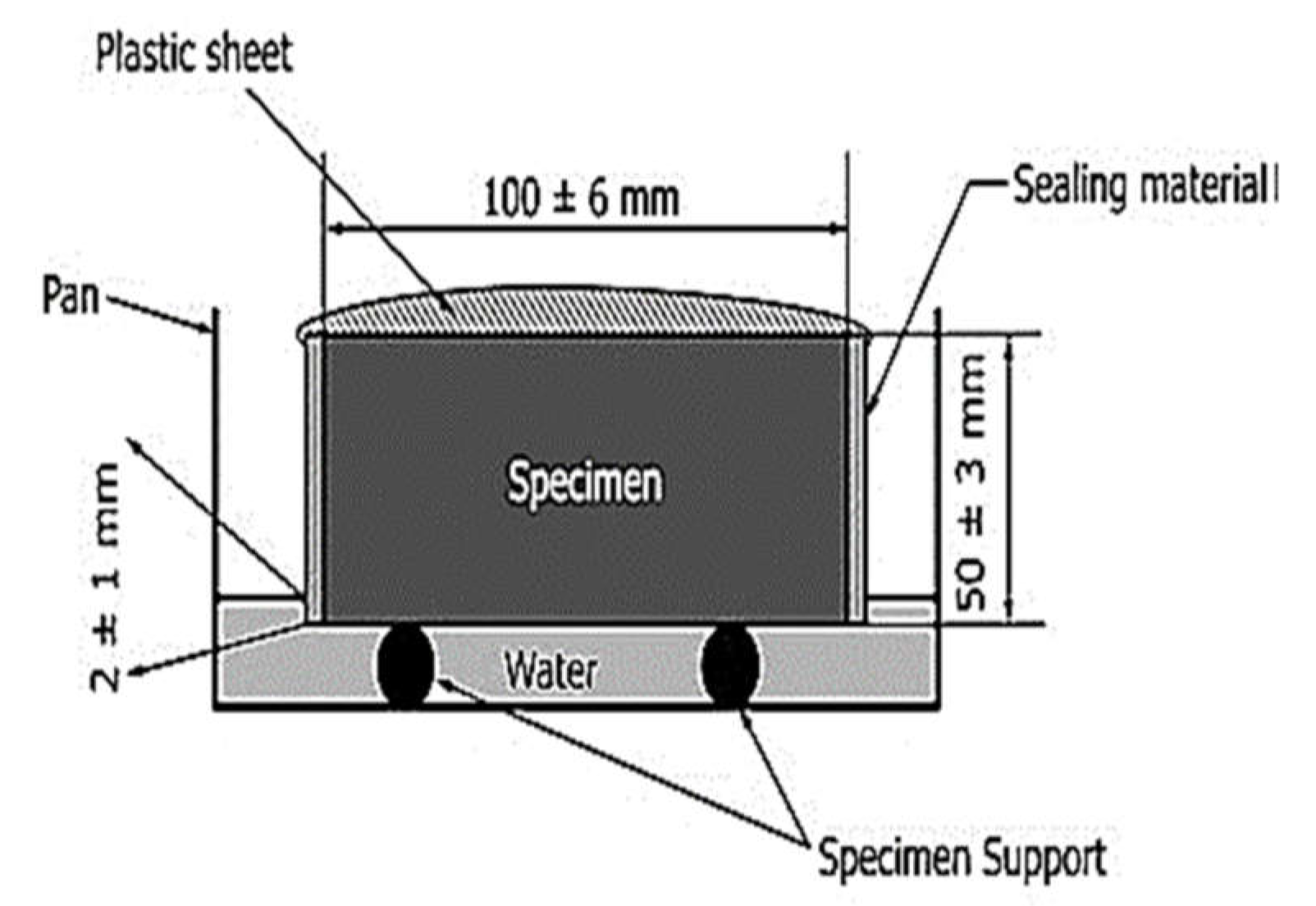
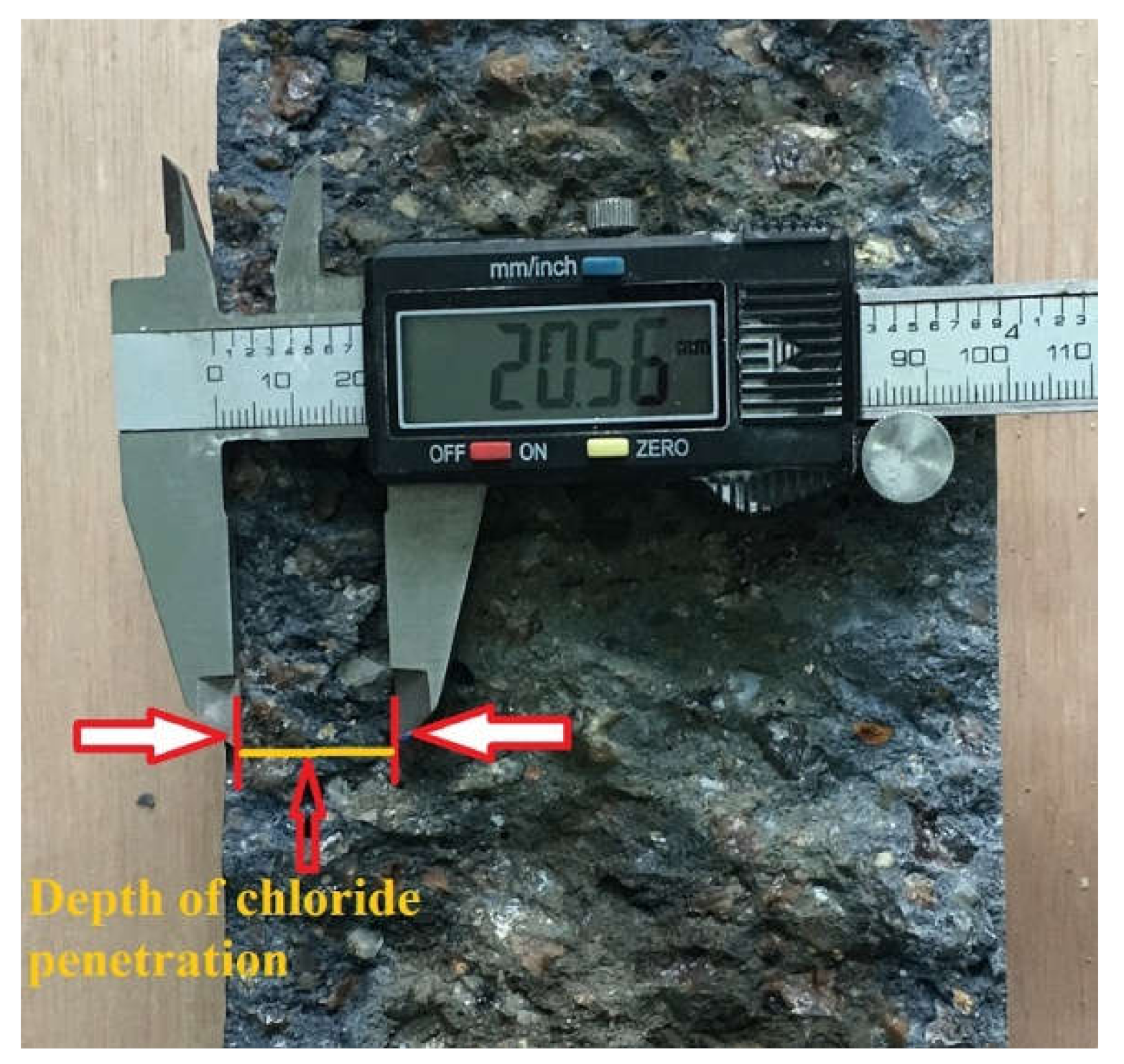

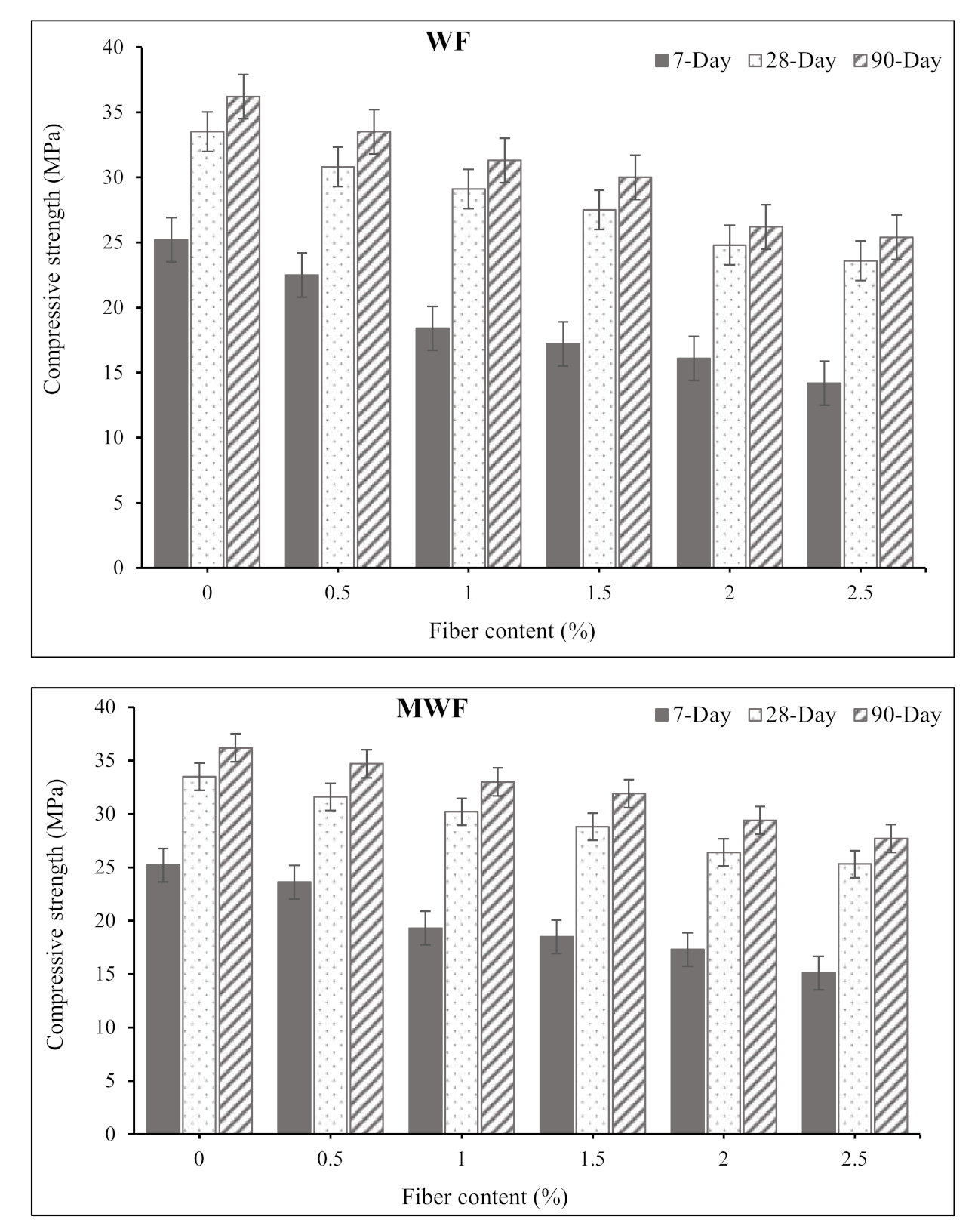
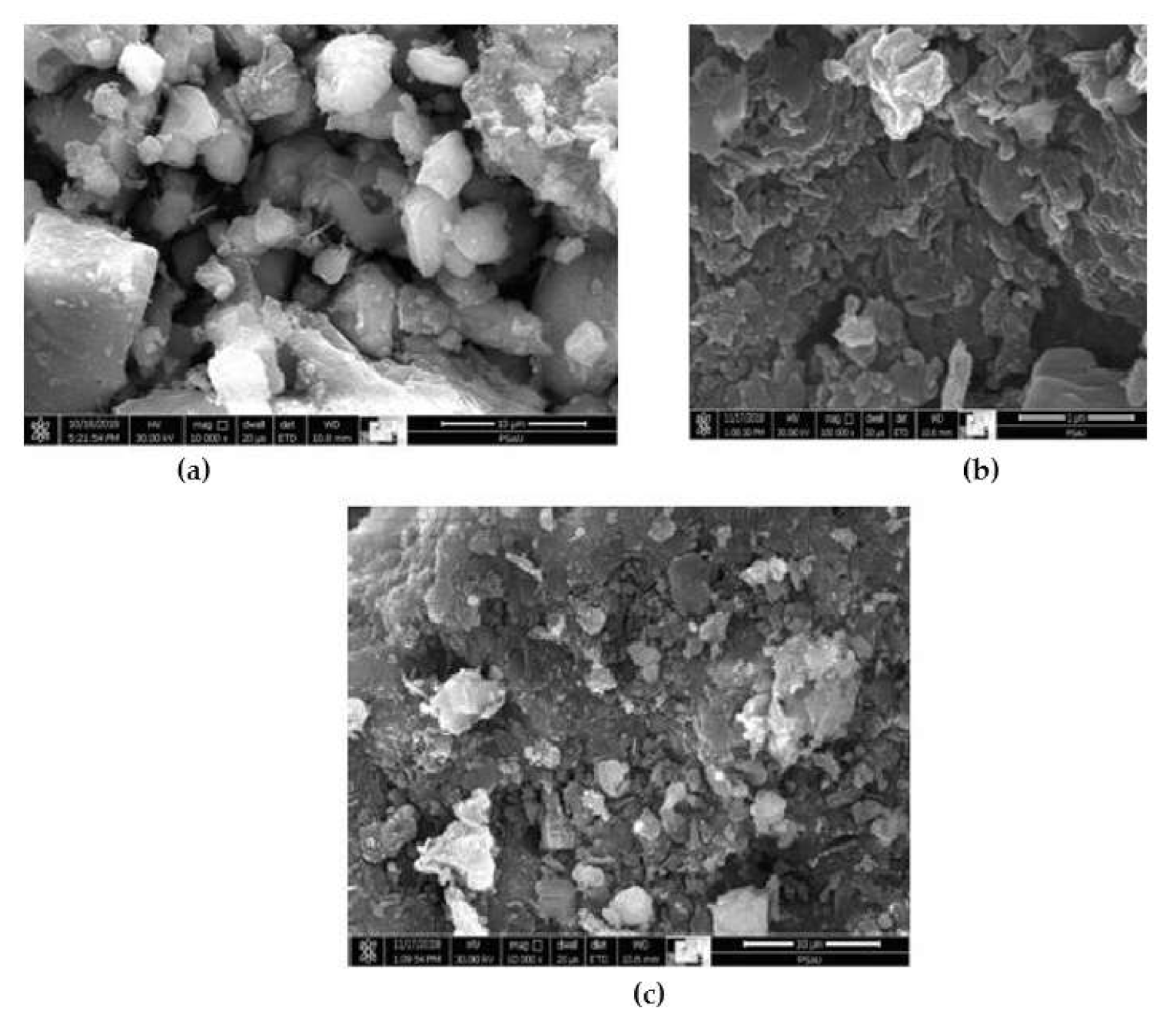
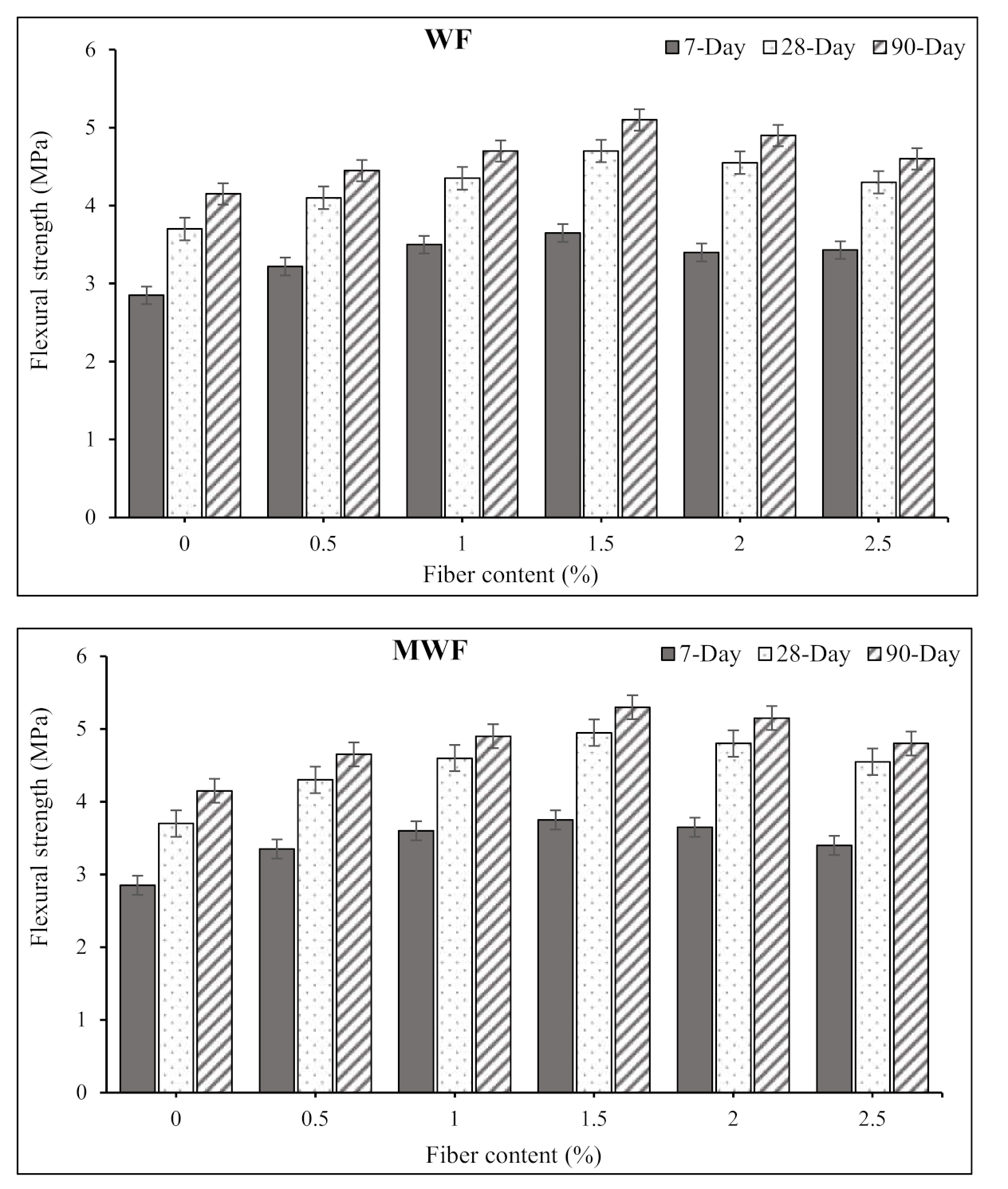
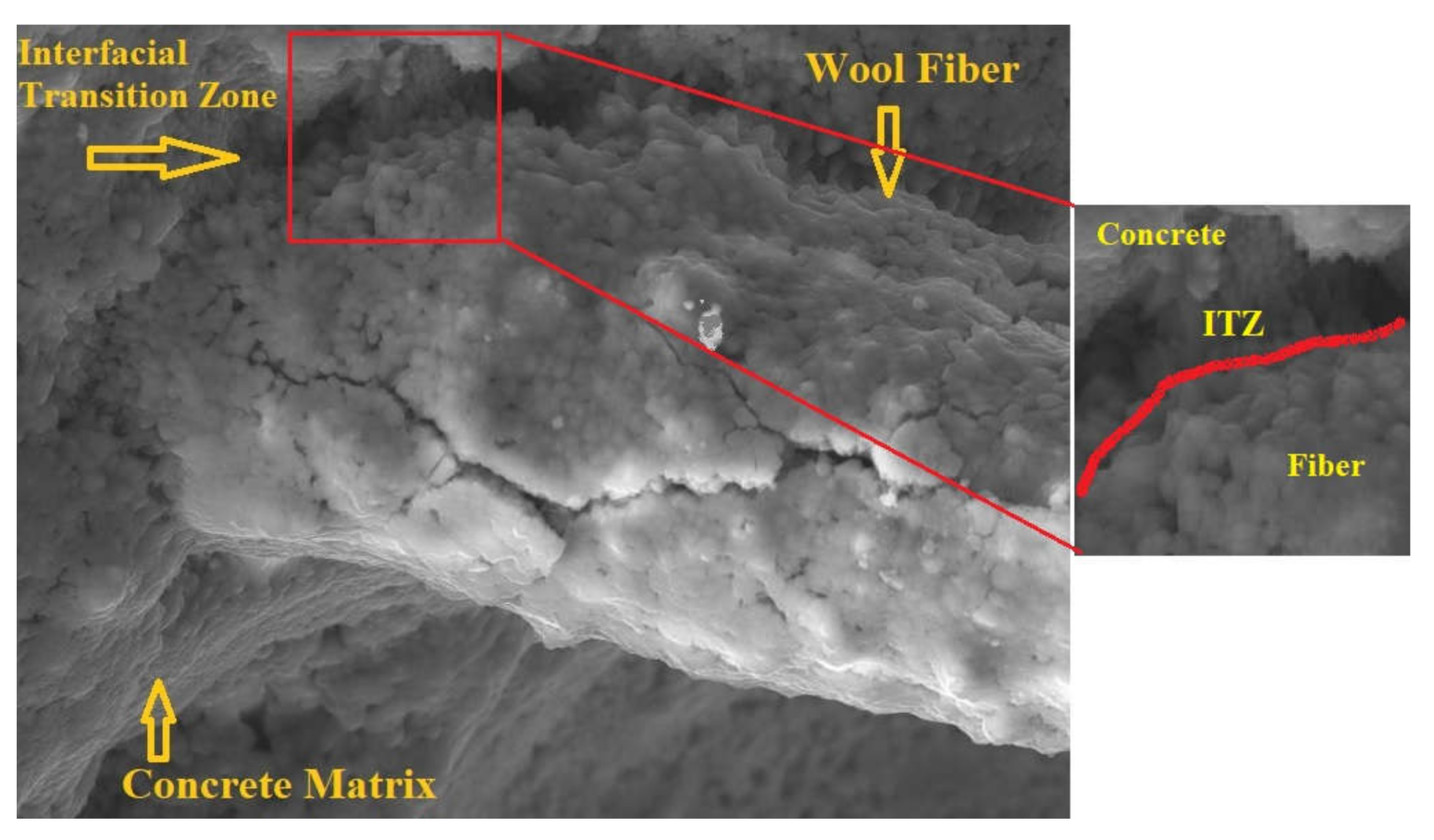
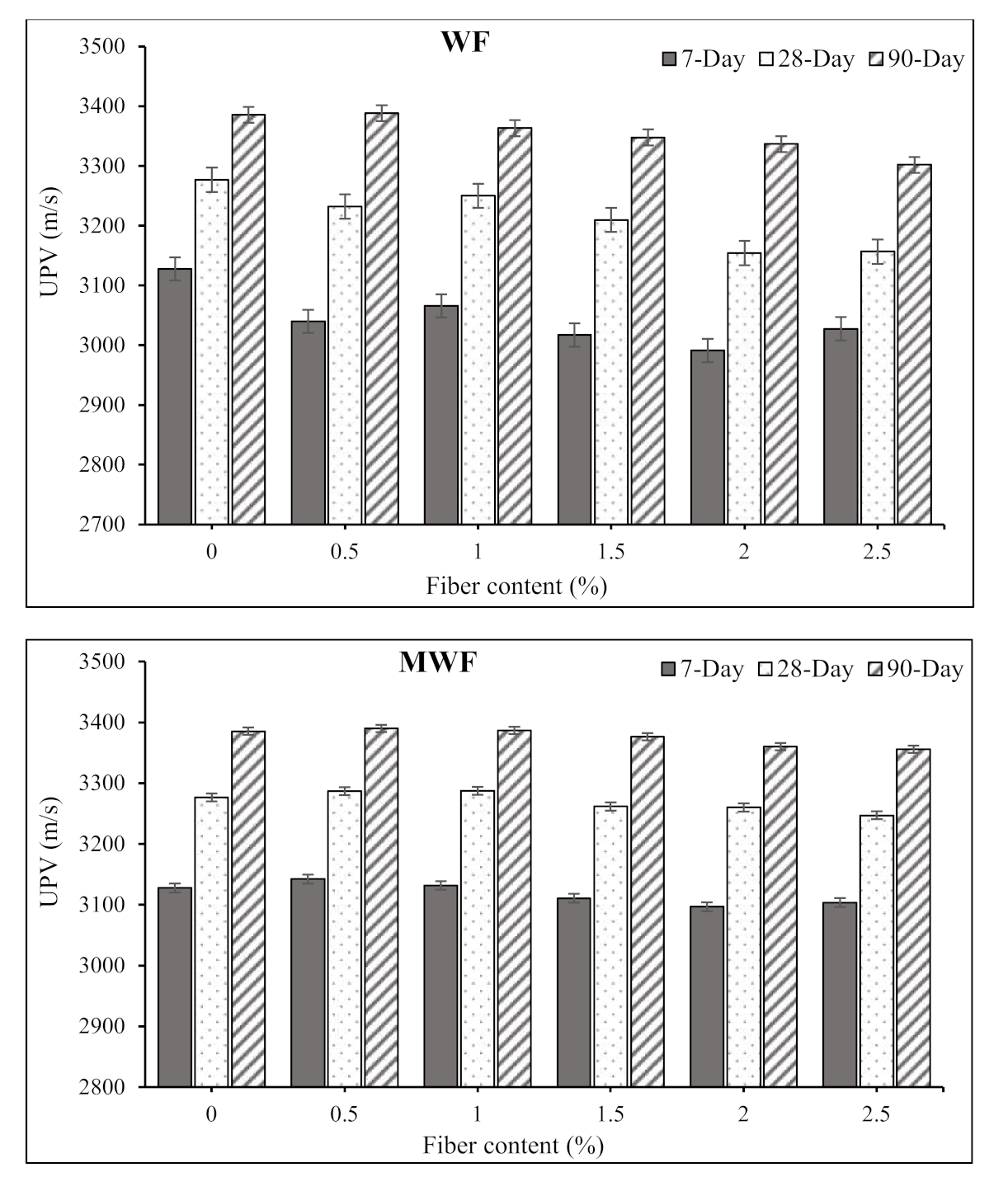

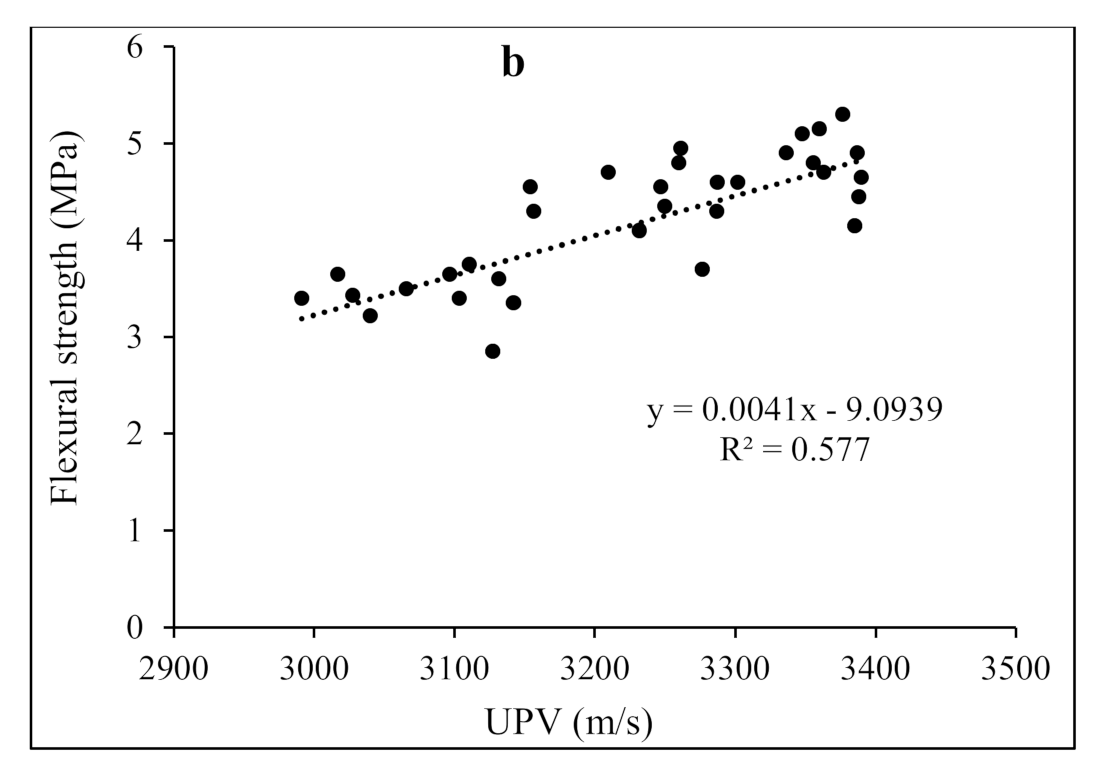
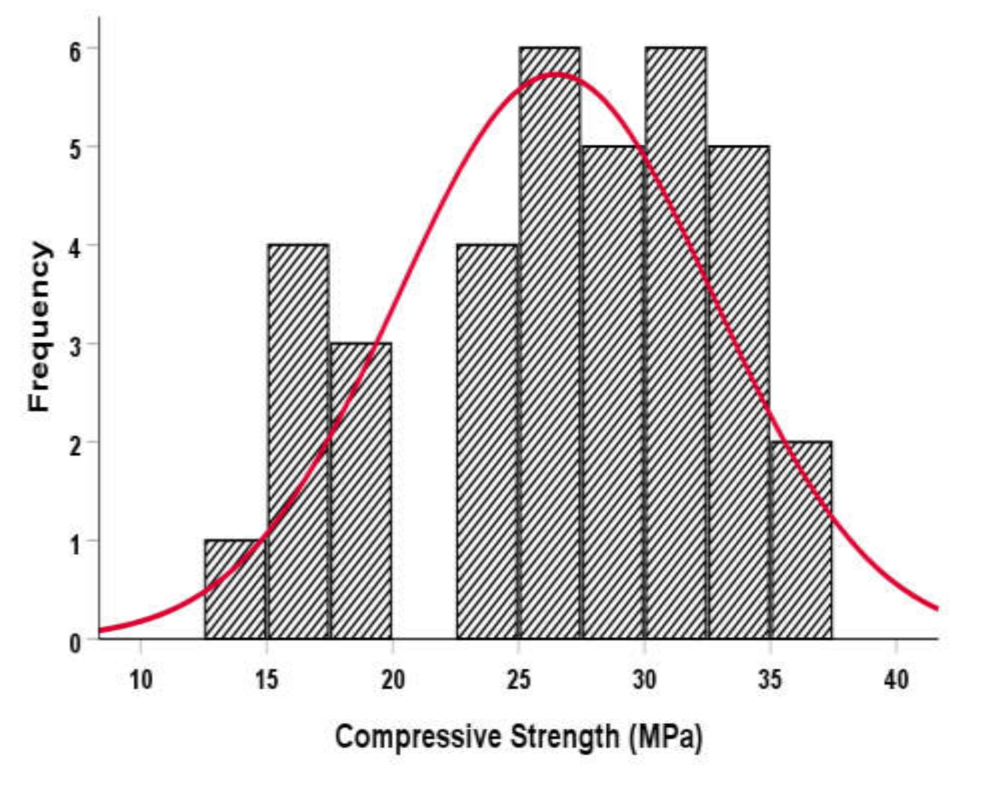
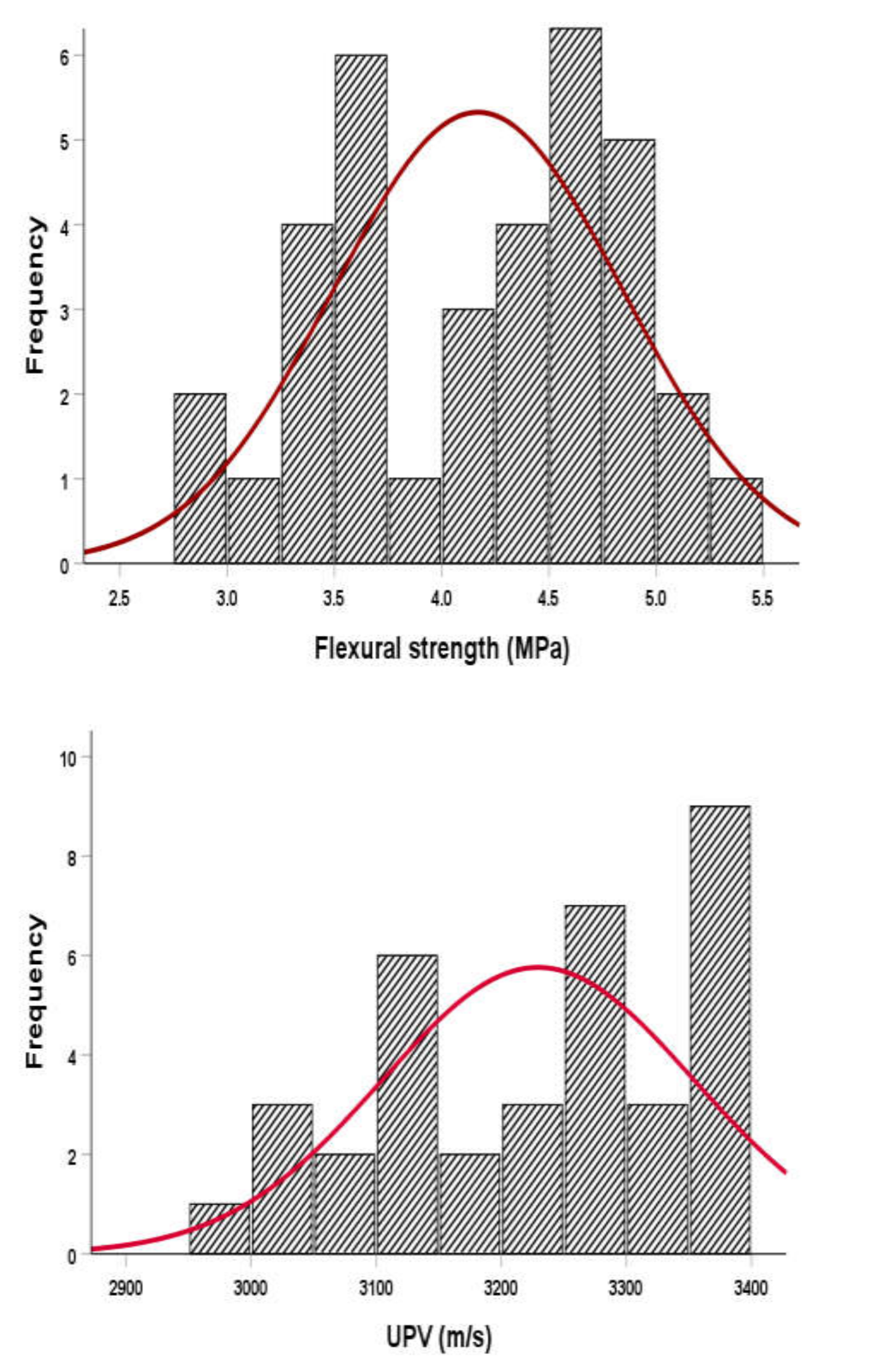
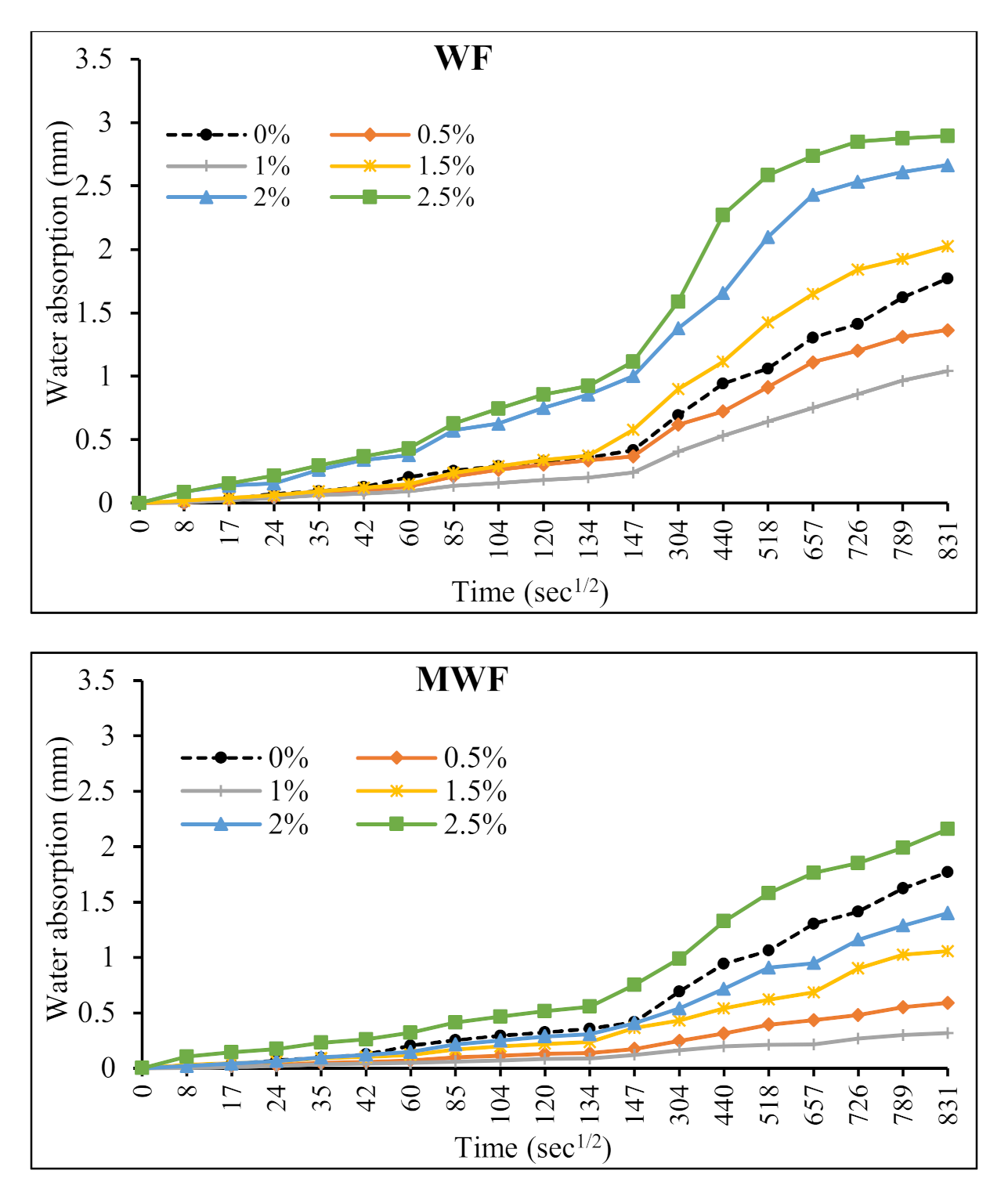
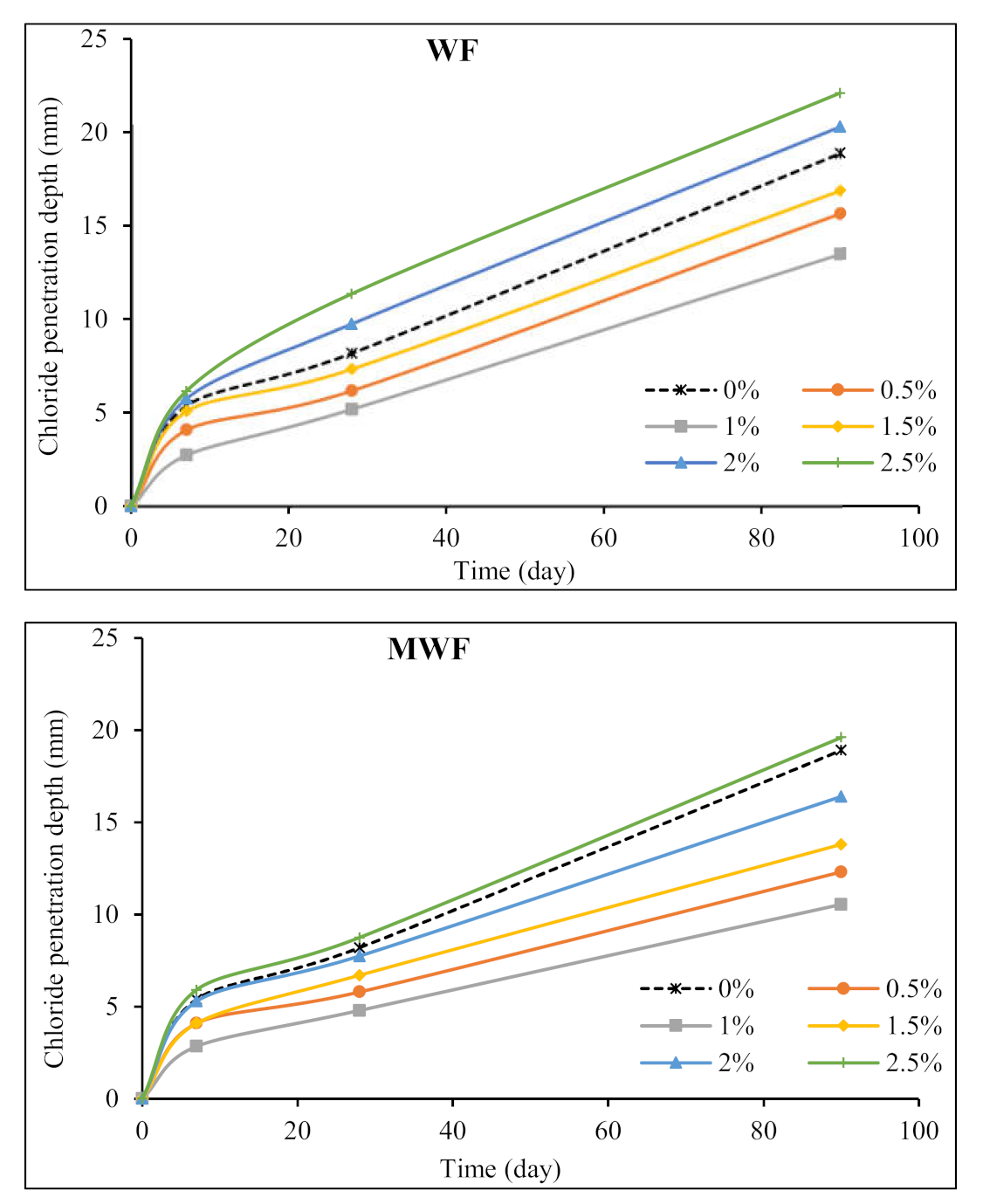
| Fiber | Diameter (µm) | Length (mm) | Aspect Ratio | Tensile Strength (MPa) | Water Absorption Capacity (%) | Ultimate Tensile Strain (%) |
|---|---|---|---|---|---|---|
| Sheep wool fibers | 95–130 | 70 | 550–650 | 390 | 28 | 50.2 |
| Mix ID | Vf (%) | WF (g/m3) | OPC (kg/m3) | Fine Agg. (kg/m3) | Coarse Agg. (kg/m3) | Slump (mm) |
|---|---|---|---|---|---|---|
| C | 0 | 0 | 8 | 16 | 24 | 65 |
| WF1 | 0.5 | 40 | 8 | 16 | 24 | 45 |
| WF2 | 1.0 | 80 | 8 | 16 | 24 | 35 |
| WF3 | 1.5 | 120 | 8 | 16 | 24 | 25 |
| WF4 | 2.0 | 160 | 8 | 16 | 24 | 15 |
| WF5 | 2.5 | 200 | 8 | 16 | 24 | 10 |
| MWF1 | 0.5 | 40 | 8 | 16 | 24 | 47 |
| MWF2 | 1.0 | 80 | 8 | 16 | 24 | 38 |
| MWF3 | 1.5 | 120 | 8 | 16 | 24 | 27 |
| MWF4 | 2.0 | 160 | 8 | 16 | 24 | 17 |
| MWF5 | 2.5 | 200 | 8 | 16 | 24 | 12 |
Publisher’s Note: MDPI stays neutral with regard to jurisdictional claims in published maps and institutional affiliations. |
© 2022 by the authors. Licensee MDPI, Basel, Switzerland. This article is an open access article distributed under the terms and conditions of the Creative Commons Attribution (CC BY) license (https://creativecommons.org/licenses/by/4.0/).
Share and Cite
Alyousef, R.; Mohammadhosseini, H.; Ebid, A.A.K.; Alabduljabbar, H. An Integrated Approach to Using Sheep Wool as a Fibrous Material for Enhancing Strength and Transport Properties of Concrete Composites. Materials 2022, 15, 1638. https://doi.org/10.3390/ma15051638
Alyousef R, Mohammadhosseini H, Ebid AAK, Alabduljabbar H. An Integrated Approach to Using Sheep Wool as a Fibrous Material for Enhancing Strength and Transport Properties of Concrete Composites. Materials. 2022; 15(5):1638. https://doi.org/10.3390/ma15051638
Chicago/Turabian StyleAlyousef, Rayed, Hossein Mohammadhosseini, Ahmed Abdel Khalek Ebid, and Hisham Alabduljabbar. 2022. "An Integrated Approach to Using Sheep Wool as a Fibrous Material for Enhancing Strength and Transport Properties of Concrete Composites" Materials 15, no. 5: 1638. https://doi.org/10.3390/ma15051638
APA StyleAlyousef, R., Mohammadhosseini, H., Ebid, A. A. K., & Alabduljabbar, H. (2022). An Integrated Approach to Using Sheep Wool as a Fibrous Material for Enhancing Strength and Transport Properties of Concrete Composites. Materials, 15(5), 1638. https://doi.org/10.3390/ma15051638






